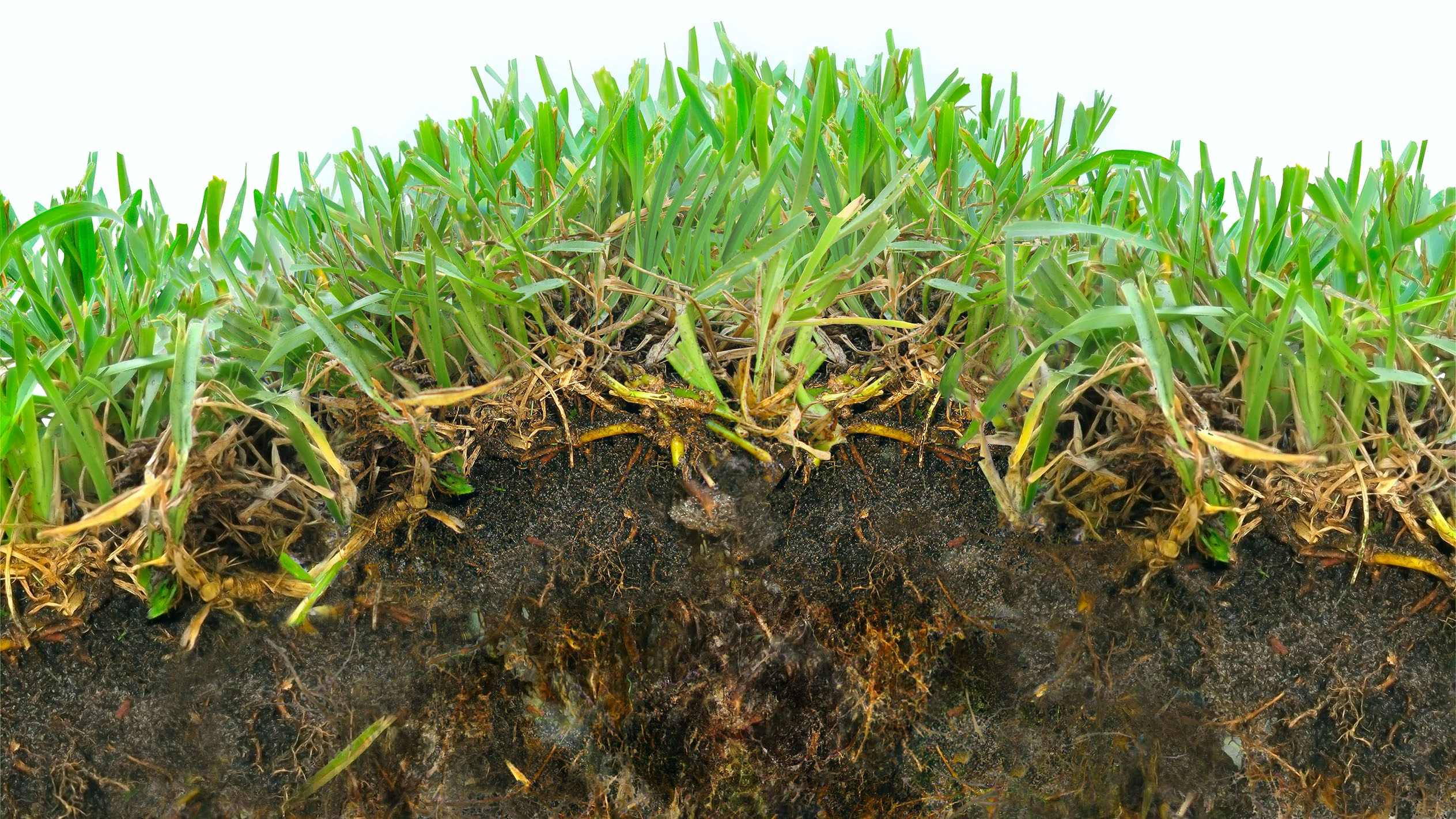
 |
Nitrogen, phosphorus and potassium — often abbreviated as NPK — are the primary nutrients that superintendents need to successfully manage in order to sustain turf health.
Superintendents have gained knowledge of nutrients and the management practices that surround them to improve playability and adhere to industry standards, says Dr. James A. Murphy, specialist in turf management at Rutgers University’s Department of Plant Biology & Pathology.
When looking at ratios of nitrogen, phosphorus and potassium, superintendents often try to match applications with the levels in the plant. In the order of NPK, they might use ratios such as 3-1-2, 4-1-2 or 2-1-2.
“There are about as many recipes for applying these things as there are superintendents,” Murphy says. “Everybody sort of has their own unique way of doing it.”
Each nutrient brings its own specialty to the soil profile and, ultimately, to the adept superintendent’s management practices.
Nitrogen
When looking at nutrient levels, many golf course superintendents seek a moderately low or low level of nutrients in their soil, but not a deficient level, Murphy says. They can manage these levels through light, frequent applications, he says.
Nitrogen provides the biggest growth response out of the three primary nutrients, and along with phosphorus, gives life to turf, even in small amounts, Murphy says.
Nitrogen highly impacts chlorophyll production, photosynthesis and turf growth and vigor, says Mark J. Davis, senior agronomist at Compass Minerals Plant Nutrition. “Turf crops are very, very nitrogen-responsive,” he says.
Superintendents have to be as efficient with nitrogen as possible, Davis says. Small, frequent applications are best, both in terms of preventing loss and utilizing all of the nitrogen.
Adequate nitrogen levels are variable from course to course depending on the superintendents’ management, Murphy says.
“The plant is going to be fitter, healthier and more vigorous if you have around 3 percent nitrogen in the tissue,” he says. “For the playing surface, some superintendents will manage it probably lower than that under some circumstances, because a fit, healthy plant sometimes is growing too well to make a nice playing surface—the ball roll, ball bounce.”
 |
Phosphorus
Phosphorus is important for root development, seedling development and good cell division, among other things, Davis says. Superintendents should apply phosphorus on turf that has come out of dormancy and is greening up, or to develop an area that has just been seeded or overseeded.
As with nitrogen, superintendents who apply phosphorus to deficient turf will see a large growth response, complete with increased growth between mows and taller grass with an increased number of shoots, Murphy says. Superintendents should have half a percent or more of phosphorus in the tissue, he says.
Phosphorus is less mobile than nitrogen and is not always available, Davis says. If pH levels are too high, phosphorus can tie up with calcium and magnesium. If levels are too low, it can tie up with aluminum. Superintendents can institute management practices like a lime application when pH is especially low, or avoiding a phosphorus application prior to a major rain event that could potentially cause runoff. “Any time you’re talking about phosphorus, it’s one thing that a golf course manager should be understanding and look at it, just so he knows what kind of conditions he’s working with to optimize the soil conditions for the best phosphorus availability,” he says.
Compass Minerals’ Wolf Trax line sells a product called Nu-Trax P that delivers early-season growth, Davis says. Containing 25 percent phosphorus pentoxide (P2O5), 20 percent zinc, 5 percent manganese and 4 percent nitrogen, it coats traditional turf blends to serve as an additive to traditional fertilizer programs.
Potassium
As an ion, potassium is needed in chemical reactions but does not get bound up in proteins or enzymes, Murphy says. It does not a stimulate a lot of growth, but it is needed to protect turf from stress and for chemical reactions to occur.
If superintendents performed a side-by-side comparison of turf with enough potassium and turf without enough potassium, the visible difference in color and growth would be minimal at first, Murphy says. As the turf without the potassium would become deficient, though, it would become more susceptible to drought and heat stress and possibly diseases.
“The longer that would go on, then it would translate into something that you would see in terms of overall growth response,” he says. “If the plant is not very healthy, it would start losing leaves, start to thin out and decline that way.”
To measure potassium levels, superintendents can send soil or leaf tissue samples to commercial or university laboratories, or use home test kits, Murphy says.
“The leaf tissue needs to be around two percent or more to be in an adequate range,” he says. “If you start getting under two percent, then if you’re not deficient you’re probably going to be deficient fairly soon.”
ABOUT THE AUTHOR
Patrick Williams is a GCI contributing editor.
Latest from Golf Course Industry
- From the publisher’s pen: Conscientious of a bigger role
- Bernhard and Company partners with Laguna Golf Phuket
- Terre Blanche showcases environmental stewardship
- VIDEO: Introducing our December issue
- Bernhard and Company introduces Soil Scout
- Nu-Pipe donates to GCSAA Foundation’s Centennial Campaign
- GCSAA enhances golf course BMP tool
- Melrose leadership programs sending 18 to 2026 GCSAA Conference and Trade Show





